

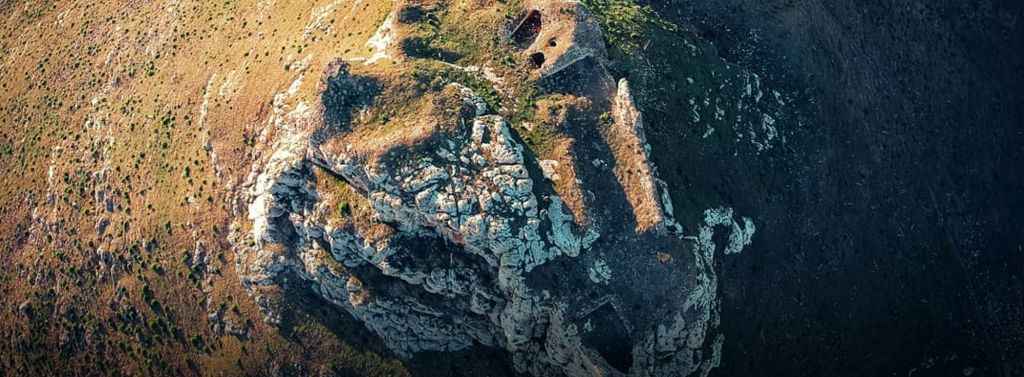


Perched on the Alta Murgia of 'Serraficaia', in the current territory of Poggiorsini, the "Castello del Garagnone" today appears as a sinister ruin located on a height of 600 meters. Subject of a consistent historical investigation as well as topographical and territorial analysis, the castle represents a testimony of what historians like R. Licinio called the 'castle system' present in the Norman and Swabian ages in Puglia. A system of castles and fortifications arranged along the main roads that crossed the region, often built on high ground to better control the territory especially along the border areas.
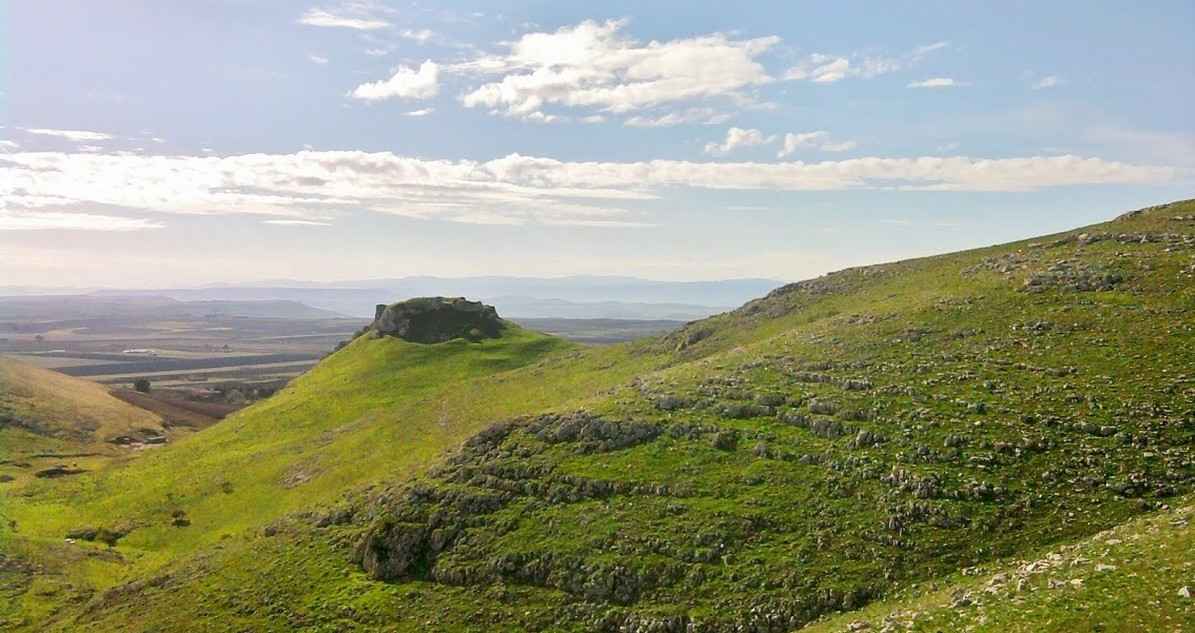 The Garagnone castle dominated the plain between the hills that currently mark the borders between Puglia and Basilicata and where in the Middle Ages the via Appia (statio di Silvium) flowed and also that road axis that from the Savignano plain, through Castel del Monte continues to Andria. The strategic importance of this site, also attested by E. Bertaux, is confirmed by other fortified complexes that can be found not far from the Garagnone on the reliefs that today are included in the territory of Basilicata such as the castle of Monteserico.
The Garagnone castle dominated the plain between the hills that currently mark the borders between Puglia and Basilicata and where in the Middle Ages the via Appia (statio di Silvium) flowed and also that road axis that from the Savignano plain, through Castel del Monte continues to Andria. The strategic importance of this site, also attested by E. Bertaux, is confirmed by other fortified complexes that can be found not far from the Garagnone on the reliefs that today are included in the territory of Basilicata such as the castle of Monteserico.
The rich documentation of notary and hexatial sources allows to follow the events of this fortified complex from its origins, documented already in the Norman age, up to the modern age, that is, until the earthquake of 1731 which marked the almost complete destruction and relative abandonment of the 'settlement.
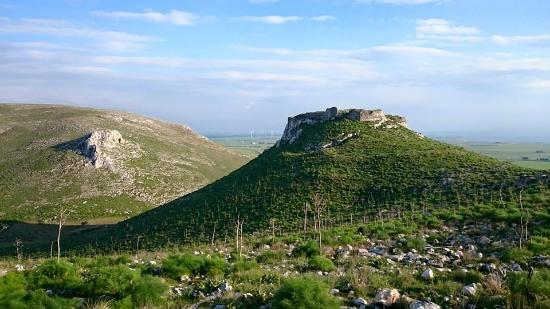 The name of the site, in fact, appears for the first time in a document dated 1149: in a notarial deed, Petro Guarannioni f. Amati receives an entitlement from Nicola, son of Pietro da Corato. In 1174 the existence of the castle is confirmed by the presence of a castellan named Ionatha. Since the early decades of the thirteenth century, documents suggest that the Garagnone castle was a fortification that dominated a vast territory in which other types of construction stood, a tower called Maraldo cited in 1192, along with the entire settlement already considered at the end of the XII century as an important possession. In fact, two documents dated 1197 attesting the handing over of the Domus del Garagnone as a grange of the Barlettana house of the order of the Hospital of San Giovanni di Gerusalemme.
The name of the site, in fact, appears for the first time in a document dated 1149: in a notarial deed, Petro Guarannioni f. Amati receives an entitlement from Nicola, son of Pietro da Corato. In 1174 the existence of the castle is confirmed by the presence of a castellan named Ionatha. Since the early decades of the thirteenth century, documents suggest that the Garagnone castle was a fortification that dominated a vast territory in which other types of construction stood, a tower called Maraldo cited in 1192, along with the entire settlement already considered at the end of the XII century as an important possession. In fact, two documents dated 1197 attesting the handing over of the Domus del Garagnone as a grange of the Barlettana house of the order of the Hospital of San Giovanni di Gerusalemme.
Under Frederick II’s rule, Garagnone underwent through important interventions as stated in the "Statutum de Reparatione Castrorum" (1241-1246). Here it is attested how the "domus hospitalia was restored or rebuilt with the contribution of the same residential community and by men of Valenzano and Auricarro, a fiefdom the latter assigned by the Swabian emperor to the Cypriot architect Filippo Chinardo.
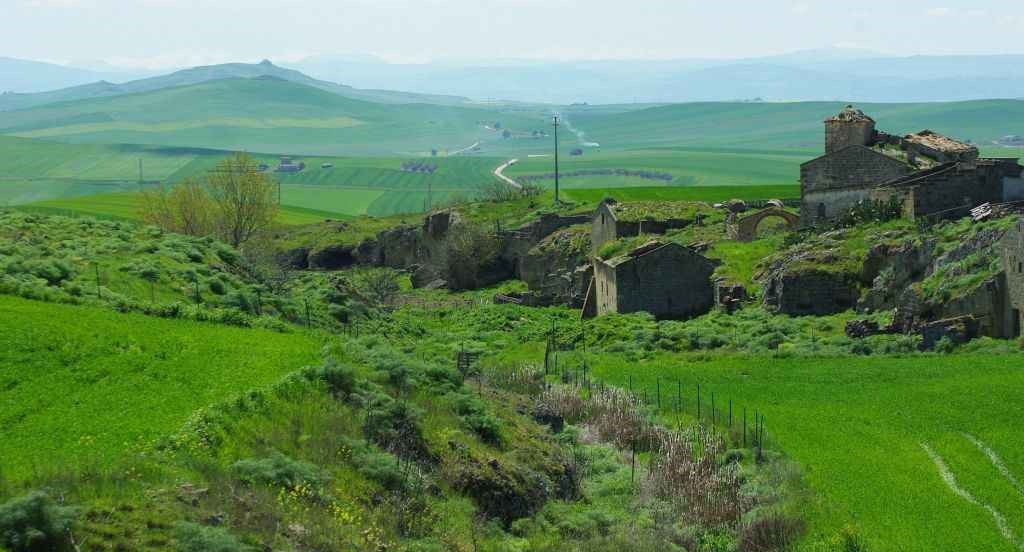 An ever increasing importance led the "Domus del Garagnone" to play a leading role in the economy of the Order of the Hospitallers, but also in the Federician imperial policies and those of the Angevin rulers.
Looted already in 1252 by Corrado IV as reported by M. Spinelli, the Garagnone was at the center of an anti-Angevin rebellion following the fall of Corradino and for this it was sacked again in 1268. Similar fate in 1357 when the castle was occupied and burned by the lord of Andria Francesco del Balzo.
An ever increasing importance led the "Domus del Garagnone" to play a leading role in the economy of the Order of the Hospitallers, but also in the Federician imperial policies and those of the Angevin rulers.
Looted already in 1252 by Corrado IV as reported by M. Spinelli, the Garagnone was at the center of an anti-Angevin rebellion following the fall of Corradino and for this it was sacked again in 1268. Similar fate in 1357 when the castle was occupied and burned by the lord of Andria Francesco del Balzo.
In addition to the political role and control of the territory, the tenure of the Garagnone from the Norman to the Swabian age assumed considerable economic importance. If it is unclear in the first documents of the XII and XIII century, whether the possession was limited only to the castle itself or included also surrounding territories, in the documents reported in the Registers of the Angioina Chancellery it is evident that it was identified as a fiefdom, thus inserted in 1270 in a list of "terrae et loci" of the Giustizierato di Terra di Bari with at the center a town community that had settled within the walls and in the external tenimentum.
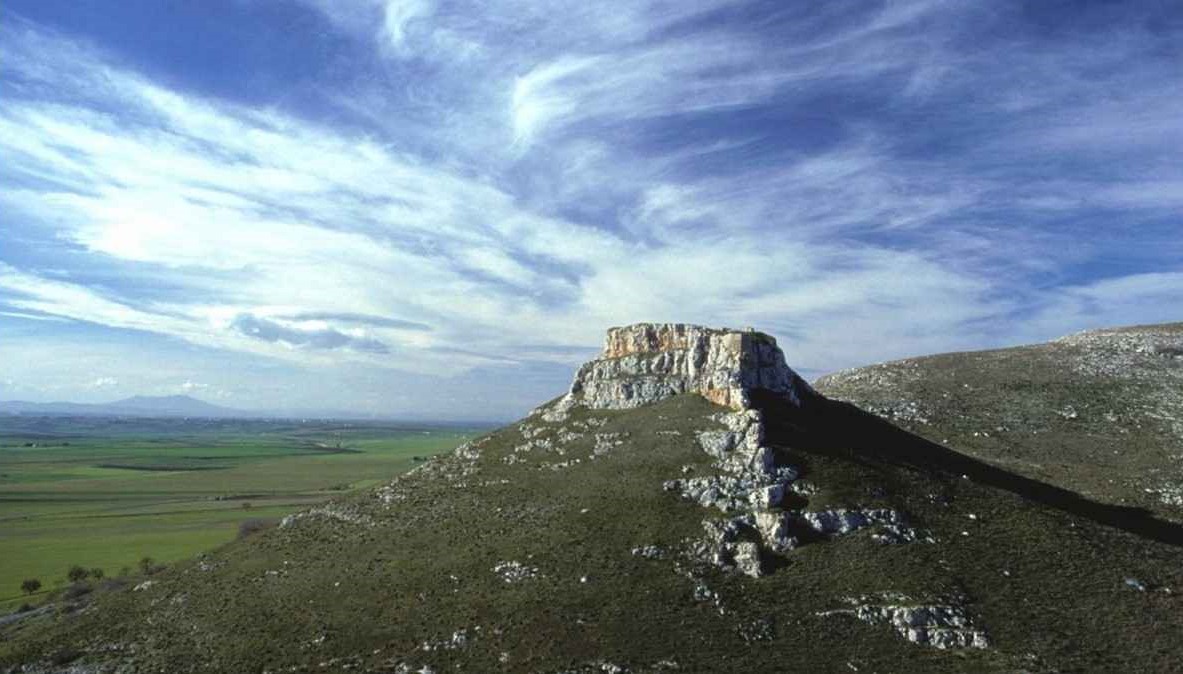 It is reported the presence of a universitas that attended to agricultural production works and that was organized with a system of houses and service environments that stood inside a wall, protected by the castle itself, as it would seem confirmed by the list of duties to which the same community was subjected during the Angevin age. A center so organized could not renounce to a church punctually reported by D. Vendola's documentary investigations in the
It is reported the presence of a universitas that attended to agricultural production works and that was organized with a system of houses and service environments that stood inside a wall, protected by the castle itself, as it would seem confirmed by the list of duties to which the same community was subjected during the Angevin age. A center so organized could not renounce to a church punctually reported by D. Vendola's documentary investigations in the
In the Angevin and Aragonese periods, the castle and the entire territory belonging to the Garagnone appears in many notarial documents; and even in 1373 in the investigation promoted by Pope Gregory IX on the Hospitallers of the diocese of Trani, the settlement is indicated as "active grange of the Order directed by such a Fra 'Byzantium, defined as a castellan and owner of the domus which consisted of a dominus, the chaplain Martino, and ten men, among whom were a miller, a baker, two fatiguing men, a dipper and a carrerius, who instead collected wood, while two servientes were present for surveillance"
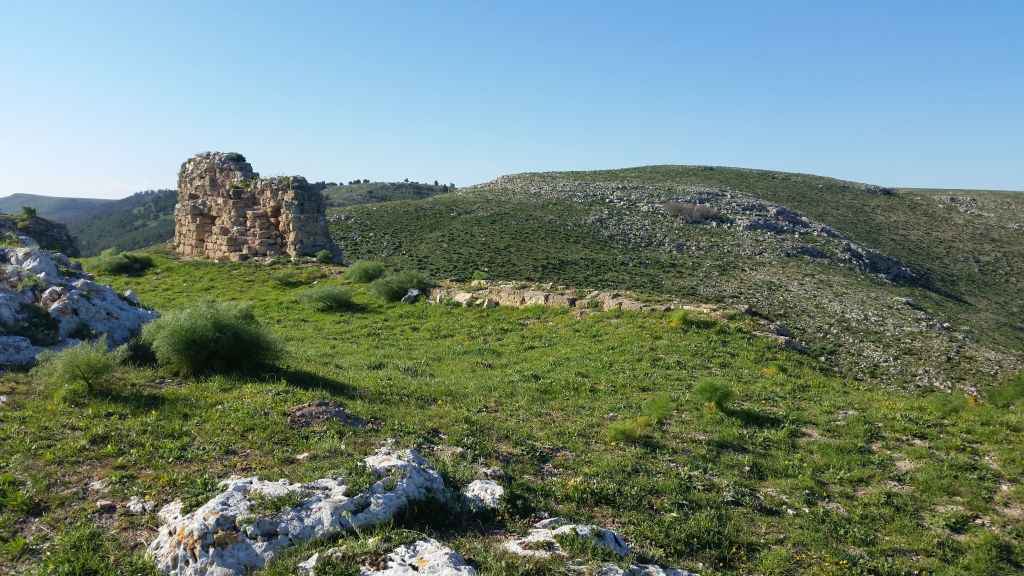 Certainly the 14th century marks a turnaround and the Castrum del Garagnone seems to gradually decline. Already in the reports of the Papal Inquiry of 1373 there is a small community, but still dedicated to agricultural and rural activities. And the exploitation of the territory, the cereal production and the pastures, will be at the center of lively interests between the counts of Gravina and Altamura, starting with Francesco Orsini who around 1420 proclaims himself count of Gravina and Garagnone. Disputes that continued until the seventeenth century, when the possession became the private property of Ercole Grimaldi in 1615, the prince of Cellamare from 1643, Giulia Gaudiosi from 1696, Giulia Nicastro from 1705, Tommaso Mazzacara in 1710 and Melodia barons from 1860. In the meantime, the castrum suffered considerable devastation which culminated in 1731 when an earthquake destroyed what remained of the ancient castle.
Certainly the 14th century marks a turnaround and the Castrum del Garagnone seems to gradually decline. Already in the reports of the Papal Inquiry of 1373 there is a small community, but still dedicated to agricultural and rural activities. And the exploitation of the territory, the cereal production and the pastures, will be at the center of lively interests between the counts of Gravina and Altamura, starting with Francesco Orsini who around 1420 proclaims himself count of Gravina and Garagnone. Disputes that continued until the seventeenth century, when the possession became the private property of Ercole Grimaldi in 1615, the prince of Cellamare from 1643, Giulia Gaudiosi from 1696, Giulia Nicastro from 1705, Tommaso Mazzacara in 1710 and Melodia barons from 1860. In the meantime, the castrum suffered considerable devastation which culminated in 1731 when an earthquake destroyed what remained of the ancient castle.
